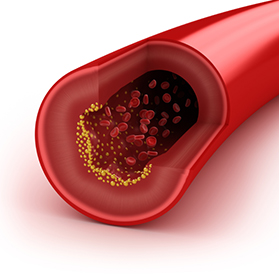Protect Yourself From Carotid Artery Disease

Carotid arteries are located on each side of your neck and provide the main blood supply to your brain. When these arteries become narrowed or have a blockage due to fatty deposits, this is known as carotid stenosis, or carotid artery disease, which is the leading cause of more than 50% of strokes in the United States.
“Atherosclerosis, or hardening of the arteries, is the most common factor behind carotid artery disease,” says Matthew Recht MD, a vascular surgeon with the TriHealth Heart & Vascular Institute.
Carotid Artery Disease: How Does it Develop?
Over time, plaque narrows arteries and can eventually cause a stroke.
Risk factors include:
- Smoking
- Diabetes
- High blood pressure
- High cholesterol
- Family History
-
>li>Increasing age
- Diet high in saturated fats
- Lack of exercise
- Cocaine use
It is important to understand carotid artery disease is often asymptomatic. The condition builds slowly over time, and because of this, there are often no signs or symptoms until a stroke or transient ischemic attack (TIA), or mini stroke, occur. If you do experience symptoms, they may include:
- Trouble with movement or sensation on one side of the body
- Problems with speech and language
- Sudden vision loss in one eye
- Weakness in one part of your body
What Are My Treatment Options?
If you are diagnosed with carotid artery disease, there are a number of treatment options. “Mild or moderate blockages that are asymptomatic are treated with medications and risk factor modification,” Dr. Recht explains. “Symptomatic patients, or those with severe blockages, will need treatment with a procedure.”
The procedures for carotid disease include endarterectomy (cleaning the artery out) and stenting of the artery. “The decision of which procedure to have depends on your circumstances,” Dr. Recht says. “It’s important to see a doctor familiar with both options.”
Be Proactive With Your Health
Protect yourself from developing carotid artery disease and stroke by adhering to the following:
- Have cholesterol levels checked at least once every five years
- Quit smoking
- Maintain a diet low in fats
- Exercise regularly
- Have your blood pressure checked at least every one to two years
By adopting a healthy lifestyle, scheduling regular visits with your doctor and knowing your family history, you can help decrease your chances of developing carotid artery disease. If you have any risk factors for developing carotid artery disease, schedule a vascular screening.